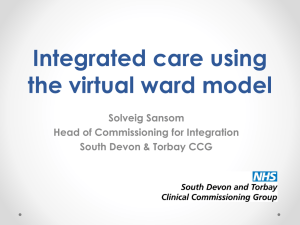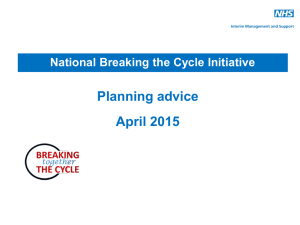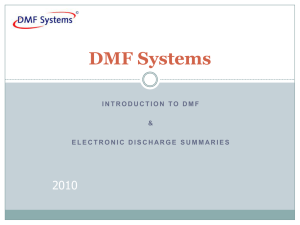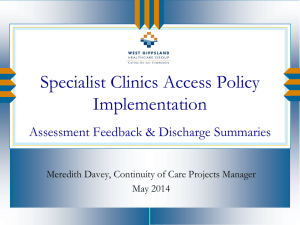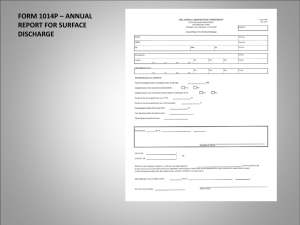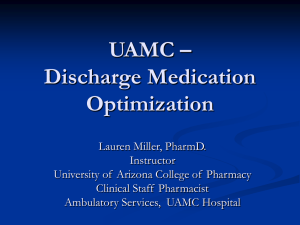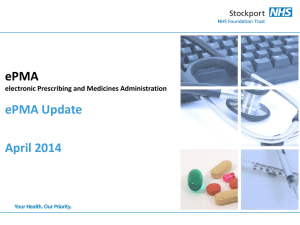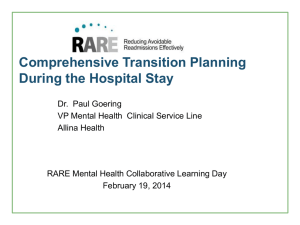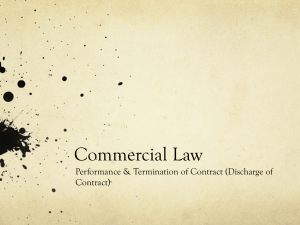SAFER patient flow bundle here
advertisement
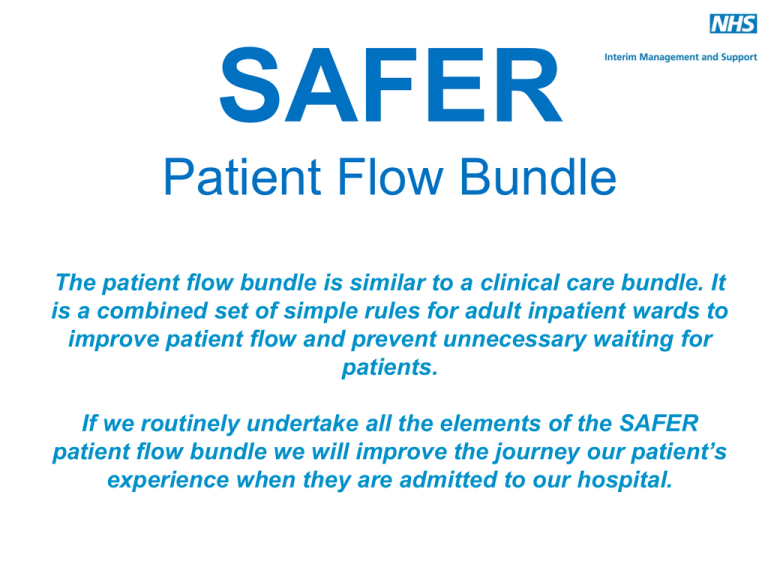
SAFER Patient Flow Bundle The patient flow bundle is similar to a clinical care bundle. It is a combined set of simple rules for adult inpatient wards to improve patient flow and prevent unnecessary waiting for patients. If we routinely undertake all the elements of the SAFER patient flow bundle we will improve the journey our patient’s experience when they are admitted to our hospital. The Patient Flow Bundle - SAFER S - Senior Review. All patients will have a Consultant Review before midday. A - All patients will have an Expected Discharge Date (that patients are made aware of) based on the medically suitable for discharge status agreed by clinical teams. F - Flow of patients will commence at the earlier opportunity (by 10am) from assessment units to inpatient wards. Wards (that routinely have patients transferred from assessment units) are expected to ‘pull’ the first (and correct) patient to their ward before 10am. E – Early discharge, 33% of our patients will be discharged from base inpatient wards before midday. TTO’s (medication to take home) for planned discharges should be prescribed and with pharmacy by 3pm the day prior to discharge wherever possible to do so. R – Review, a weekly systematic review of patients with extended lengths of stay ( > 14 days) to identify the issues and actions required to facilitate discharge. This will be led by clinical leaders supported by operational managers who will help remove constraints that lead to unnecessary patient delays. Senior Review The Board Round introduces structure to the day to day running of the ward and helps the ward team to manage the patients safely and effectively Consider sick and unstable patients first – is the patient deteriorating? What actions are required? Board Rounds Initial early Review Have new patients been given a n expected date of discharge that the MDT agree on? Are there any patients to be discharged today/tomorrow? What needs to be done to ensure they go before midday? Are there any delays that need to be expedited? Senior Review The ward round should promote a consistent organised and disciplined approach to ensure an efficient use of time and resources , ensuring care is coordinated appropriately The ward round should follow the board round in the morning each day Patients should be seen in a specific order: • Sick unstable patients MDT • Potential discharges one-stop • The remaining patients A record of the round, with clear management Ward plans, should be written in the patient’s notes Rounds TTOs (medication) should be prescribed and diagnostics ordered in real time Identify patients for discharge early discharge tomorrow ALL Patient have an expected date of discharge Expected Date of Discharge (EDD) helps the Hospital to plan and understand its available capacity at all times – it must be up to date Has the patient’s EDD been set within 24 hours of admission? Expected Date of Discharge (EDD) Is the EDD realistic and does it reflect the actual date and time the patient is expected to go home? Has the EDD been reviewed and, if necessary, updated each day? Is the patient aware of the date and time they are expected to go home? Have they been given a welcome card or letter? Flow early from assessment units Wards that routinely have patients transferred to them from assessment units on a daily basis will ‘pull’ the first (and correct) patient before 10am every day to create the required capacity for incoming patients Flow early from assessment units to IP wards Inpatient wards that routinely have patients transferred to them from the assessment units need to ‘pull ‘the first patient to their wards before 10am everyday Ward and assessment unit teams will communicate effectively to ensure wards know the details of the next patient they need to ‘pull’ from the assessment unit ensuring there are no delays for patients By creating assessment unit capacity earlier in the day, unnecessary waiting for patients awaiting admission will be significantly reduced Earlier discharge A third of discharges from inpatient wards should be before midday Earlier discharge Patients pre-prepared on admission for early discharge and use of Discharge Lounge (if there is a discharge lounge) Non use of Discharge lounge by exception Potential to write up and issue TTOs even though patient has already gone to Discharge Lounge Review long length of stay patients We need to proactively respond to the identified delays through appropriate action planning Do all patients have clear management plans for their medical care within the medical record? Length of Stay Reviews Is the patient waiting for any procedures or tests? Do these need chasing? Have you considered whether the care of the patient can be provided in an alternative setting rather than an acute hospital Benefits Key points • Patients will benefit from improved care co-ordination and standardisation of approach (the same as with a clinical care bundle) • Patients will benefit from a well planned, informed and timely discharge • Patients will be less likely to be outliers (i.e. cared for on the wrong ward) • Patients will be less likely to be cared for in crowded wards and departments • Implementing the SAFER patient flow bundle should be clinically led with operational managers removing constraints • Implementing all elements of the bundle consistently will deliver the greatest benefits for patients and staff • The SAFER bundle is a set of simple rules. There may be a need for local teams to adapt it slightly. This is ok as long as the rules are broadly followed each day every day
